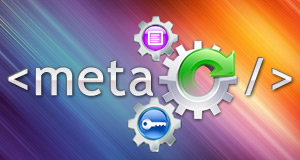Introduction
I have been working on translation projects for many years, and during this time, I have come across quite a few challenges! In this blog post, I would like to look at some common problems related to translation source content – and how to overcome these challenges.
So, what happens in a typical translation project here at Webcertain? Clients send their Account Manager the documents they need translating (this is known as the “source” content), and then it gets sent to our translation department.
You may think that the quality of the translation will be purely down to the translator who is working on it – but that is not the case. The content they receive is equally important to the outcome.
The translators work with the source content provided by the client, so the quality of that source content will have an impact on the translation. For example, if the source is missing any kind of grammar, or if the spelling is not quite right, or if the wrong product name is in there, this will likely filter through into the translation.
This hopefully highlights how important it is to ensure that your source content is as good as possible, before it gets sent off for translation.
How can we ensure that the source content is problem-free, before it gets translated?
It is actually really difficult on our side to do that, because often we receive the source content on the word of the client that the content is ready to be translated.
If something is obviously wrong, then one of our Project Managers or the translator will flag that and say, “Hey, we are having some difficulties translating this. Could you have another look?” – but some errors may not be so obvious.
I would always recommend that you proofread your source content before it comes to us.
Or, if you are not sure about the quality of your source content and how well it will translate, we offer various services that can help. You can have your source content reviewed, or there is in-language research available, or there are alternative services such as transcreation and copywriting – which I will go into more detail about later in this blog post.
How can we ensure that the translation is not only translated, but also localised and resonates well with the local audience?
With translation, the translator is relaying the messages and facts of the source content into the target language. Quite often, however, the source content will be written for either a very global market or a very Western market, so when you then try to translate that into Arabic or Chinese or Russian, for example, it does not sound very culturally appropriate. That is not due to the translator, but what is actually in the source content.
Therefore, if you have some content that needs to be more culturally appropriate, I would recommend that you either edit your source content, or that you request a more creative service such as transcreation or copywriting, or that you have an in-country editor take a look at the copy afterwards and make those tweaks.
What is transcreation and how does it work?
Transcreation involves giving a translator more creative freedom – e.g. to make tweaks to make content more culturally appropriate – but it does need to be guided.
As a client, if you know you have source content that needs to be more culturally relevant for your target market, you would need to give us a brief and some guidance about what it is that you want changing. It could be the currency or the date format, or it could be something broader such as referring to local landmarks, so that the transcreator can make those changes accordingly.
Making those cultural adaptations can make all the difference when it comes to making your content resonate with the local market.
What about the translation process and how the content is actually processed by the translator?
We use industry-standard tools called computer-assisted translation (CAT) tools. Although they add a lot of benefits, such as translation memories and term bases for glossary terms, they do have the downside of breaking down the content segment by segment.
This means that if a document is several pages long, the translator may not see the whole document at once, since it would be fed through the CAT tool and broken down into little segments.
Therefore, it may not always be obvious that for example some grammar is missing or a brand term is incorrectly used. The latter in particular might not be easy to spot unless you are actually working in that business.
This again highlights why it is so important to ensure that the source content is perfect before it gets sent off for translation – so that any errors in the source content are not fed through into the translations.
What can clients do to help the translator do the best possible job?
Other than what I have already touched on about making sure your source content is correct, one of the things we are often missing is context.
Quite often, we might receive a couple of strings for translation but the wider context about what that means is missing. We may even just receive a list of terms, and the translator has to look at that and make their best judgement.
If you have any visual context, a wider paragraph, a related whitepaper or anything like that, that gives the translator a bit more information, this is always welcomed and we will send this on to the translator for reference.
Do you need help with your translations?
Webcertain offers high-quality translation services, so if you need help with your translations, learn more and get in touch with us today by clicking here!
Samantha Brazel
Latest posts by Samantha Brazel (see all)
- An introduction to SEO-localisation - March 23, 2023
- 3 tips for achieving high-quality translations - March 21, 2023
- 3 tips to make website translation more efficient - May 18, 2022





